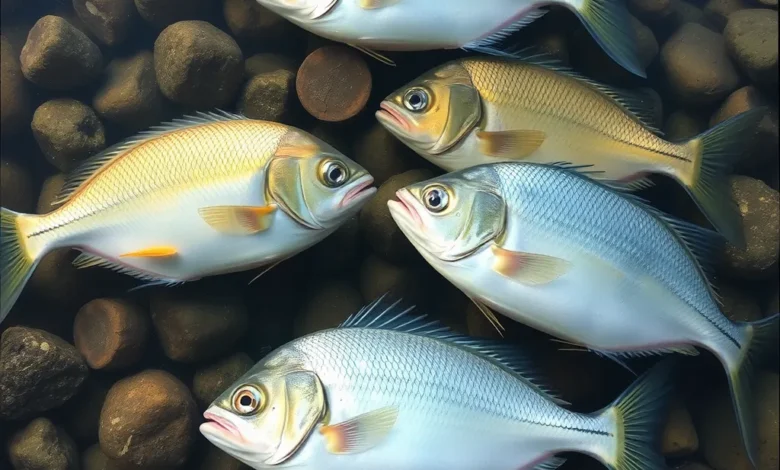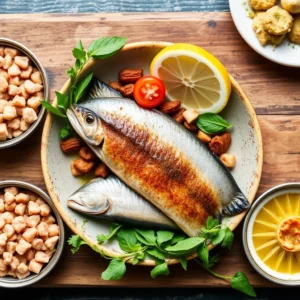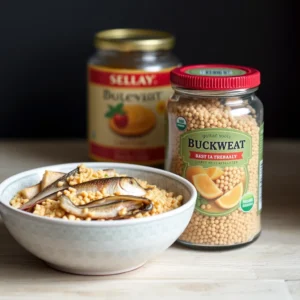Tinned Fish and Buckwheat: The Unexpected Pantry Staples Taking Over 2025

In 2025, the humble pantry is getting a makeover. Two ingredients—tinned fish and buckwheat—are emerging as surprise stars in kitchens and on restaurant menus, capturing the attention of chefs, home cooks, and health-conscious eaters alike. What’s behind their meteoric rise? It’s a story of nutrition, convenience, sustainability, and a little culinary creativity.
Tinned Fish: From Forgotten Can to Culinary Hero
Once relegated to the back of the cupboard, tinned fish is now front and center in the food world. No longer just a last-resort lunch, it’s being celebrated for its versatility, nutrition, and gourmet potential. From classic tuna and sardines to more adventurous options like mackerel, anchovies, and even octopus, tinned seafood is popping up on charcuterie boards, in salads, pasta dishes, and as the centerpiece of trendy “tinned fish boards.”
No longer just a last-resort lunch, it’s being celebrated for its versatility, nutrition, and gourmet potential. From classic tuna and sardines to more adventurous options like mackerel, anchovies, and even octopus, tinned seafood is popping up on charcuterie boards, in salads, pasta dishes, and as the centerpiece of trendy “tinned fish boards.”
What’s fueling this craze? Affordability and convenience are key—tinned fish is shelf-stable, easy to store, and ready to eat at a moment’s notice. But it’s also about health: these little cans are packed with protein, omega-3 fatty acids, and essential vitamins, making them a smart choice for anyone looking to boost their nutrition without breaking the bank.
There’s also a growing appreciation for quality and sustainability. Many brands now highlight the source of their seafood, focusing on responsible fishing practices, traceability, and eco-friendly packaging. Consumers can trace their can of tuna or sardines from ocean to plate, giving them confidence in what they’re eating and how it was produced. This transparency is winning over a new generation that cares as much about the story behind their food as the flavor on their fork.
Social media has played its part, too. Viral recipes and “tinned fish nights” have made these products cool, inspiring people to experiment with new flavors and pairings. Whether it’s a Spanish-style tapas spread or a simple lunch upgrade, tinned fish is proving it can be both practical and indulgent.
Buckwheat: The Ancient Grain for Modern Times
While tinned fish is making waves, buckwheat is quietly becoming a staple for health-conscious and adventurous eaters. Despite its name, buckwheat isn’t actually wheat—it’s a gluten-free seed that’s been cherished in Eastern European and Asian cuisines for centuries. Now, it’s winning fans worldwide for its impressive nutrition and versatility.
Buckwheat is loaded with plant-based protein, fiber, B vitamins, and minerals like magnesium. Its naturally gluten-free status makes it a go-to for people with celiac disease or anyone seeking to reduce gluten in their diet. But its appeal goes beyond health: buckwheat has a unique, nutty flavor and a hearty texture that works in both sweet and savory dishes.
You’ll find buckwheat in everything from pancakes and noodles (like Japanese soba) to porridge, salads, and baked goods. It’s also being used in innovative snack foods, energy bars, and even as a crunchy topping for yogurt and smoothie bowls. Its ability to adapt to so many recipes makes it a favorite for home cooks looking to shake up their routines.
Sustainability is another part of the story. Buckwheat grows quickly, requires fewer pesticides than many grains, and is often used in crop rotation to enrich the soil. As more people seek out foods that are good for both their bodies and the planet, buckwheat’s star continues to rise.
A Pantry Revolution
The popularity of tinned fish and buckwheat reflects a broader shift in how we think about pantry staples. Today’s consumers want foods that are nutritious, convenient, affordable, and environmentally responsible. They’re looking for ingredients that can do double (or triple) duty in the kitchen—delicious on their own, but also versatile enough to inspire creativity.
staples. Today’s consumers want foods that are nutritious, convenient, affordable, and environmentally responsible. They’re looking for ingredients that can do double (or triple) duty in the kitchen—delicious on their own, but also versatile enough to inspire creativity.
Both tinned fish and buckwheat fit the bill perfectly. They can be dressed up for a dinner party or thrown together for a quick weeknight meal. They’re accessible to cooks of all skill levels, and their long shelf life means less food waste.
As we move further into 2025, expect to see even more inventive uses for these unexpected staples. Whether you’re layering sardines onto sourdough toast, tossing buckwheat groats into a salad, or creating a fusion dish that combines both, these ingredients are proving that sometimes, the best food trends start right in the pantry.




